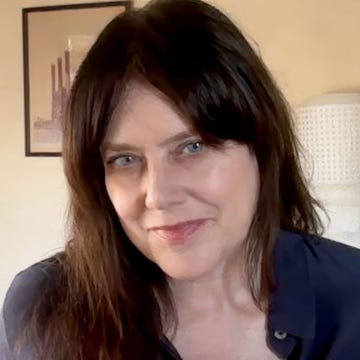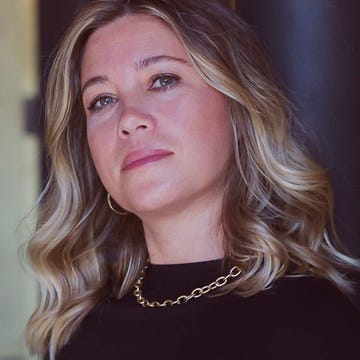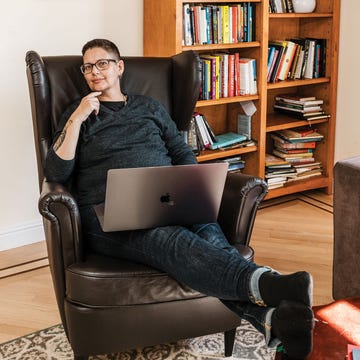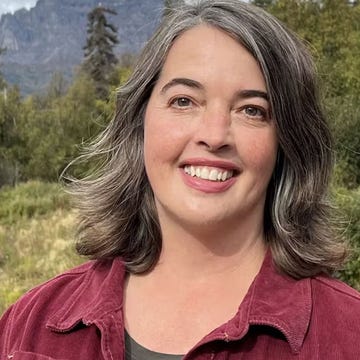Marisa Silver’s eighth work of fiction, At Last, comes positioned as a novel, although I’m not sure that’s quite right. Not that it isn’t a novel, but rather, it’s also something more elusive, a book that moves by way of a series of subtle shifts and fissures, an exploration of style and shape. One chapter is composed in the first person. Others move between past and present tense. The result is a narrative (or a set of interwoven narratives) that, in evoking two very different women and the ties that bind them after their children wed, moves back and forth over the span of nearly a century.
Silver, I should acknowledge, is a friend with whom I often discuss writing: the craft of it, as well as the art. I am drawn to her openness about the process, her willingness to sit with what she knows and what she doesn’t, to see how it emerges in the work.
“I wanted to write about these women across the course of their lives,” she explains about At Last during a Zoom call. “I wanted to track not only their relationship vis-à-vis the marriage of their children, but also to get a sense of who they were, from soup to nuts.” What she’s addressing is the complexity of any connection between human beings, how little we know about even those in proximity to us. We get each other wrong, as Philip Roth observed in his 1997 novel, American Pastoral.
Then we recalibrate and get each other wrong again.
At Last establishes that perspective from the outset, opening in 1971 in Omaha, Nebraska, where Evelyn Turner has just met Helene Simonauer on the eve of their children’s nuptials. Both are widows, but otherwise, they couldn’t be more different: the former tough as nails, a mother of three whose husband died young of heart disease; the latter a well-to-do doctor’s wife from Cleveland, Ohio, with a rigid set of rules for life. Driving to pick up flowers for the ceremony, Evelyn asks to light a cigarette. In the passenger seat, Helene agrees despite herself. “The car already smelled strongly of residual smoke,” Silver writes of the character’s disenchantment, “that would certainly become trapped in the fibers of her good wool coat.”
The incident is slight but telling, establishing a middle ground between the women that only deepens over time. And yet, this deepening is complicated, less a matter of entrenchment than of a necessary posture of negotiation, especially once Evelyn’s daughter and Helene’s son have a daughter, Francie, who becomes, albeit in different ways, the focus of both her grandmothers’ love.
If such tensions appear straightforward—commonplace, almost—that’s the whole idea. For Silver, the small moments are the large ones: the frames, the lenses, through which we encounter ourselves. “I think,” she says, “that’s very much a part of all my writing, that the ordinary can tell a deep story. I don’t write novels that have enormous adventure plots, or mysteries where a secret is unfurled. I’m interested in finding a specific detail that allows me to explore something resonant and deep.”
The dynamic is one Silver also investigates in her short fiction; she is the author of two collections, Babe in Paradise (2001) and Alone with You (2010). In her story “The Visitor”—which, not unlike At Last, involves cross-generational family relationships—a young orderly at a VA hospital considers what might happen when her grandmother, with whom she lives, can no longer work. “Candy looked at her grandmother’s hands,” Silver tells us. “Arthritis, that devious sculptor, was beginning to shape them, and it wouldn’t be long before she could no longer work a sewing machine or hold needle and thread. What then? Could they survive on Marjorie’s Social Security and Candy’s pathetic salary?”
Time and tide, the press of it, is, and must be, the way of life. That there is nothing exceptional about this, Silver is saying, is what makes the notion reverberate, because it is what every one of us, in our own fashion, must sooner or later face.
A related aesthetic sits at the center of At Last, which has as much in common with Silver’s stories as it does with her other longer work. Call it a miniaturist’s point of view, or more precisely, a pointillist’s. The pattern emerges from the details, the structure from the requirements of narrative. “I love thinking about how structure can express some of the thematic elements of what I’m writing,” Silver insists, referring to the way that family stories inevitably intersect. “That it’s not arbitrary but allows a reader to understand in a subliminal way what the book is about.”
What this means is that there’s no fixed way to write a book—or even to understand where you are going until you start. How else to know than in the doing? It all grows out of a process of discovery, both the story and its form. That’s why At Last makes so many leaps, in terms of time and character and geography. That’s why it has so many points of view. Take Francie, for instance: When we first meet her, she is 5. Then, she is 15, and 17. Take her parents, whose marriage goes through a variety of vicissitudes, or her grandmothers, who grow old. So much of this takes place off the page, in the in-between spaces that are unrecorded but register in the body nonetheless. That’s part of the point as well.
Seen or unseen, it leaves a mark. It affects all that ensues.
In that regard, At Last is a book Silver had to be ready to write, to trust herself and her characters. “Most of it,” she admits, “was intuitive. When writing, certain ideas swirl around in your subconscious, and if they’re available to the narrative, maybe you choose them, because that’s part of what is brewing. There’s a sort of lost-and-found quality.… It’s not unlike life, you know? We don’t know all the connective tissue of everything, and we make a lot of associations all the time.”
Here we see a key reason for the shifts in tense and the chapter in first person, which give At Last an atmosphere of familiar (which is to say, lived-in) unpredictability. It’s a deft move, reminding us that narrative, like family, can be difficult to encapsulate, made up as it is of many voices, many personalities. “I wrote each chapter,” Silver says, “in the way it came to me.… Why not? I mean, sometimes you’re asking yourself about choices you make, and the answer is just, Why not?”•













